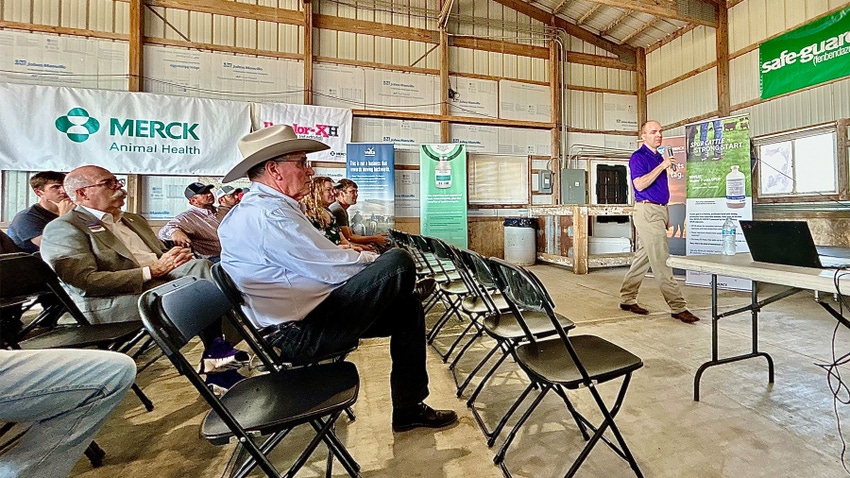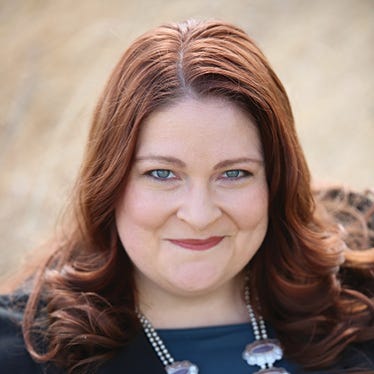Tonsor: Beef cattle outlook supports higher prices
Glynn Tonsor tells Kansas State University Stocker Field Day that tight supplies support higher prices for next two years.

Glynn Tonsor told attendees at the Kansas State University Beef Stocker Field Day Sept. 28 if they take away two points from his beef outlook, to let them be these:
We have notably higher cattle prices now, and we’re expecting to sustain those through 2025 at least.
Beef demand has held up better than we thought it would in 2023, and it’s been really good for at least the past couple of years.
Fewer animals
Tonsor, K-State agricultural economics assistant professor, explained the extended drought in cow-calf country has led to fewer beef cattle in our nation’s herd. Smaller calf crops in the past pretty much dictate lower slaughter numbers —and we’re on path, he says, for lower fed cattle slaughter over the next nine quarters.
“Here in 2023, we’re going to harvest 5.5% fewer, mainly steers and heifers, fewer than we did in 2022,” Tonsor said. “We’re going to further reduce that by 7.5% in 2024, and we’re going to reduce it even further in 2025 by 5.5%.”
It’s not just the number of fed cattle, but the weight they bring to the packer. Tonsor says projections are a 1% increase in dressed weights through 2024 and into 2025. Consider: Lower cattle numbers going into feedlots means feeders need to meet their margins, so expect some movement in feed costs and the days cattle are on feed, Tonsor said.
And still, that 1% to maybe 1.5% bump in dressed weights isn’t enough to overcome the lower cattle numbers, and the U.S. in 2023 saw a 6% decline in pounds of beef produced — with 2024 projected to grow that deficit another 6% and 2025 to add to that deficit by another 4.5%. That’s the core support of these projected higher cattle prices, Tonsor said.
The Livestock Marketing Information Center projects that the 500- to 600-pound feeder steer price out of the Southern Plains for the last quarter of 2023, will be in the range of $2.85 to $2.87 per cwt. There is a strong likelihood that cattle producers may see some calves sold for $3 in the next month, Tonsor said, and that could go as high as $3.25 to $3.40 in the last quarter of 2025. That’s something for cow-calf producers to look forward to, but stockers and backgrounders will need to account for in their business plans.
Better cattle
Tonsor said even though the beef cattle herd is down 3.6% to around 28.9 million head from 2022, today’s cattle are much improved over the cattle of 20 years ago. Advancements in gathering data to help cattle producers make better decisions, and the increased efficiency in feeding out cattle and reducing death losses in the feedlots are all ways the industry has evolved.
Mother Nature, though, can’t be counted out. Tonsor reminded cattle producers that roughly one-third of the nation’s beef cattle herd is in states where conditions have improved from the drought. In the big picture, though, there are fewer cows grazing on land under drought stress. The herd, Tonsor said, is in a better forage position than it was last year.
Cattle producers may be looking to talk to their lenders about expanding their herd, and he advised them to use the tool that you can find online at Evaluating Cattle Cycles: Changes over Time and Implications.
Users can input the price they expect to pay for replacement cows, and other data, and it will tell them what kind of return they may expect. Tonsor strongly advised cattle producers to know their costs of production, and to use this tool before they start expanding their herds.
You can see Tonsor's slides here. Also, be sure to check back with the K-State Beef Stocker Field Day website for recordings of speakers that you might have missed.
About the Author(s)
You May Also Like




.png?width=300&auto=webp&quality=80&disable=upscale)
